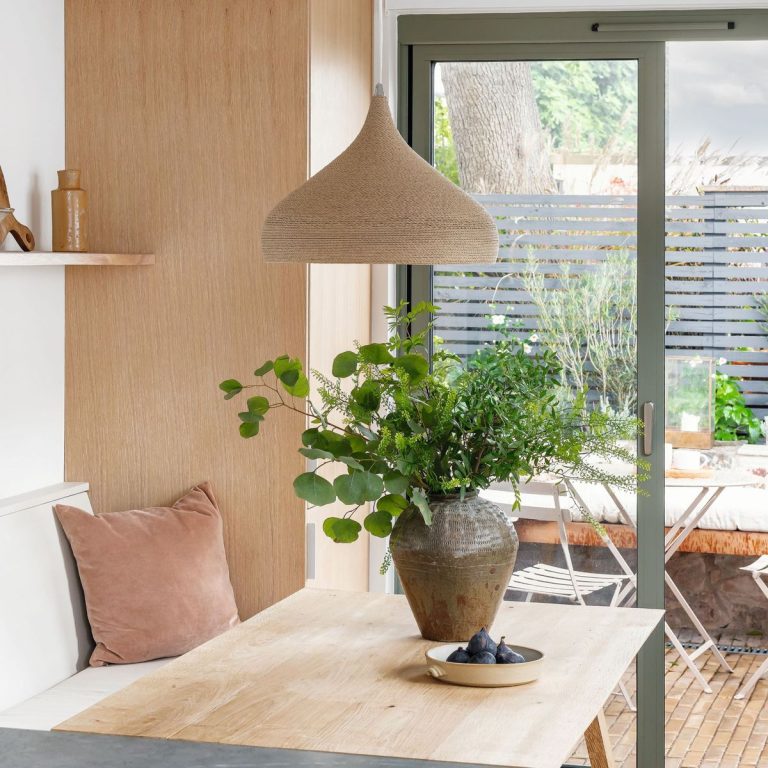When Tim Freeman returned to his hometown of Clifton Village in Bristol and bought a small commercial property, his intention was to build a compact bachelor pad there while he worked on other projects.
A mutual friend introduced him to architect Lizzy O'Neill, who helped with the design and gained planning approval, and a few months after planning the project, they began dating as a couple.
Just as work was beginning on the challenging, cramped site, Tim's builder went bankrupt, causing Tim to suffer a huge financial loss. With a shared vision of building a spacious, energy-efficient home for the two of them, Tim and Lizzie decided to manage the project together.
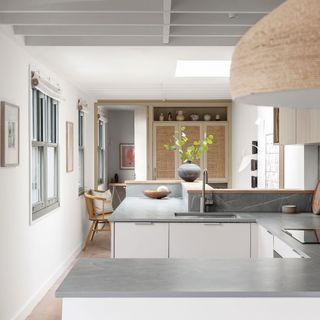
(Image courtesy of Pete Helme Photography)
The entire project has cost approximately £300,000 since building works began in April 2021. It began with the demolition of the existing building and the house was rebuilt using SIPs (structural insulated panels) to maximise internal space and improve thermal performance.
We wanted to know more about the renovation process, including how they arrived at the interesting decision to design their home with an upside-down floor plan. Here are all the details the couple shared with us as we toured the home.
Perfect location
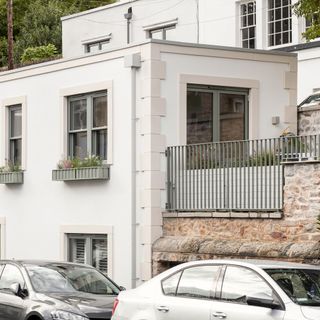
(Image courtesy of Pete Helme Photography)
“The property has such an interesting history,” says Tim, “it was originally used as a manure shed and feed bin for the horses at the stables across the road, and when it was recently sold it was a pitched-roof building for a pottery shop and a little café.”
He added: “I've always loved this location and buying a commercial property in a conservation area without planning permission was a risk, but I naively thought it would take around six months to a year to complete.”
plan
“We submitted our planning application in May 2020, knowing it wouldn't be easy,” Tim continues. “There was a lot of objection from residents who were concerned about developing their land, but after some back and forth and some changes to the design, the plans were approved in August 2020.”
A big focus for the couple was that their new home would require very little energy to run: They planned to use an air-source heat pump to provide all the hot water and underfloor heating, plus add solar panels on the flat roof.
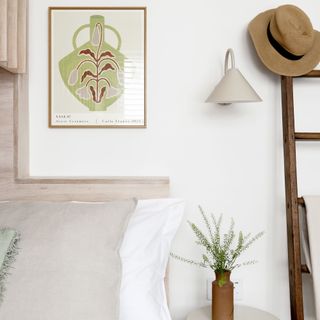
(Image courtesy of Pete Helme Photography)
Ups and downs
“Because the site is on solid bedrock and has a retaining wall behind it, we couldn't use heavy machinery to dig the foundations,” says Tim. “We dug a metre-long hole and filled it with silent dynamite which slowly expands to split the rock. The foundations took around six months to complete, at which point the main contractor was liquidated. Lizzy and I began managing the project together, using various subcontractors to complete the work.”
The home was built with off-site made structural insulated panels (SIPS), which are perfect for such a small, tricky space, plus they're much thinner than traditional cavity walls, meaning every millimeter counts on such a tight lot.
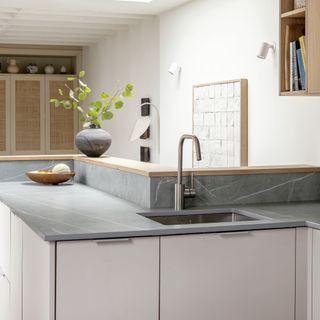
(Image courtesy of Pete Helme Photography)
This compact self-build home with two bedrooms and two bathrooms has an exterior design based on a traditional stable house. Measuring 18m x 3m, the property is built directly on the walkway and has an upside-down floorplan. The ground floor contains a hallway, two bedrooms and two bathrooms, while the first floor features an open plan living kitchen dining area and study.
Dining Area
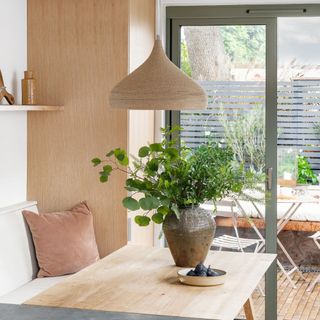
(Image courtesy of Future PLC/Pete Helme Photography)
“The space is very flexible for entertaining, with built-in seating that has a lid that opens up to provide additional storage space,” says Tim.
Exposed beams create a sense of height and add visual interest. “I didn't want to overcomplicate the palette, so I stuck to a white background and added some rustic, natural materials,” Lizzy says.
kitchen
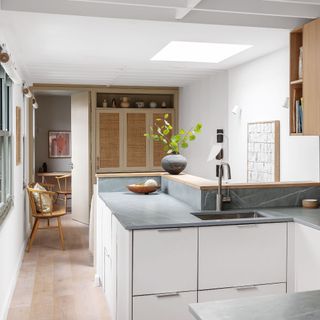
(Image courtesy of Pete Helme Photography)
“We're really happy with the open-plan space on the second floor, with lots of natural light throughout the day,” says Lizzy. “It all starts with the walkway on one side, where every millimetre counts.”
Wicker doors discreetly hide the TV so it doesn't become an unwanted focal point, and Tim says the breakfast bar he's sneakily installed in the area is his favourite space in the house. “It's only 20cm wide but it's the perfect spot to sip a glass of wine whilst cooking.”
living room
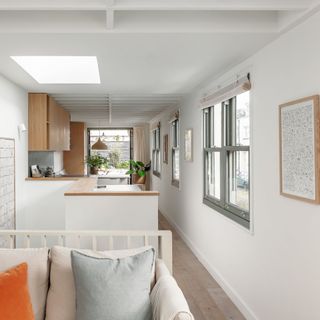
(Image courtesy of Pete Helme Photography)
“By locating all three zones along one wall, we can place the windows larger and lower, and skylights also allow light to flood the space.” The sash windows are painted a grey-green to match the plants outside. Directional spotlights allow for flexibility and the ability to change the mood.
“The same flooring is installed in the study, providing a quiet space to work when needed.”
Guest Bedroom

(Image courtesy of Pete Helme Photography)
“This bunk bed can actually sleep three kids and was designed with friends and their families in mind,” says Tim. “It has drawers under the bed and a headboard with handy nooks to save space.”
Private bathroom
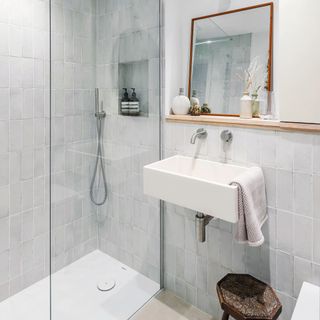
(Image courtesy of Pete Helme Photography)
“Both the main bathroom and this space have the same vertically stacked bathroom tiles and concrete countertops, creating a unified look.”
Master bedroom
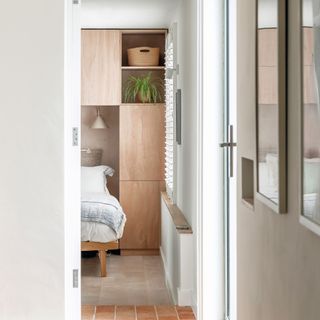
(Image courtesy of Pete Helme Photography)
“Instead of a bedside table, we designed a custom storage shelf that creates a cosy space for the bed. It's made from prefabricated plywood with veneer trim.”
Slimline shutters let in light and provide privacy without adding bulk to a small bedroom.
terrace
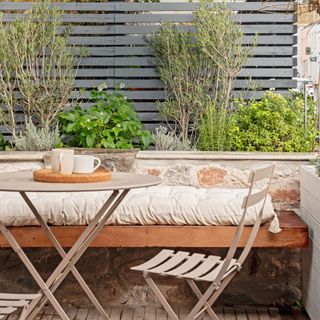
(Image courtesy of Pete Helme Photography)
“The house faces south, so the small outdoor space on the first floor gets the most sun,” says Tim. “It's especially lovely as a spot for your morning coffee! We created planting beds using recycled stones from the building and added an L-shaped floating iroko bench.”
The couple planted fragrant plants such as jasmine, herbs and a small olive tree that thrives in a sunny spot.
Featured: Air Source Heat Pumps
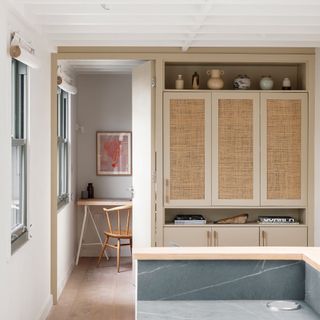
(Image courtesy of Pete Helme Photography)
Tim and Lizzy wanted to save energy and build an environmentally friendly home, so they chose an environmentally friendly alternative to boilers for heating and hot water. An air source heat pump works like a refrigerator, keeping one area warm and another area cool. Electrically powered heat pumps are highly efficient, about five times more efficient than gas boilers, which results in lower energy bills and less reliance on fossil fuels.
If you want to switch to this eco-friendly alternative, you'll need a unit (about the size of a washing machine) outside to collect heat. It must be mounted on a wall or placed on the ground with space around it. Plus, you'll need space inside to fit a hot water storage tank about the size of a refrigerator and freezer. Lizzie and Tim's is located under the stairs.
It will cost around £8,000 to buy and install a pump, but there is a £5,000 government grant available if you qualify. You should also make sure you have enough insulation and radiators. Heat pumps take longer to heat up than a traditional boiler. They are expected to last for 20 to 30 years. They are less maintenance-intensive than traditional gas or oil boilers.
Team Effort
“It took a lot of obstacles and a lot of patience and determination to build our home,” Tim says. “We finally moved in two years ago and we love it here. The size and location are perfect for us.”
He added: “Building a new home is never easy, especially when your builder goes bust and you're left in an incredibly stressful situation, but purchasing the property was the best decision I ever made. Taking the plunge, working with Lizzy and spending time on the design at the start of the project really paid off. We were in a good place when we started building.”
Get the look
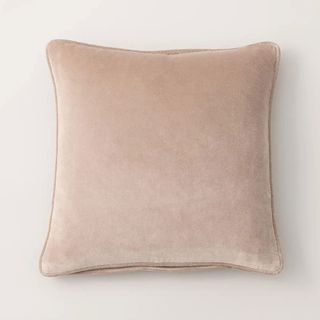
Clara cotton velvet square cushion
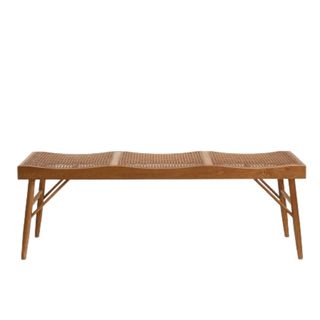
Zara Home Wooden and Wicker Bench
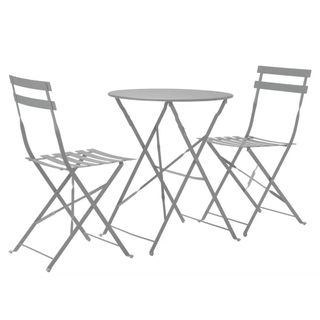
Habitat Eve 2-Seat Folding Metal Garden Bistro Set

